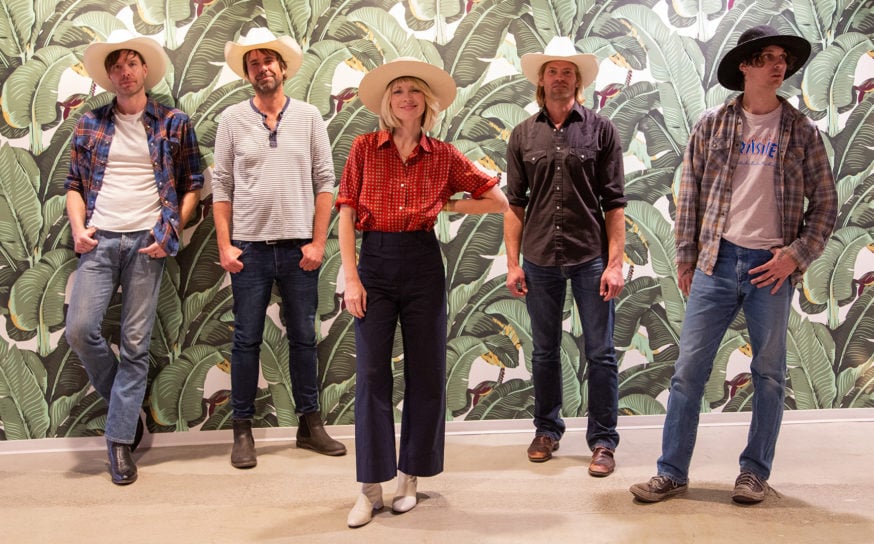
A SoCal Horticulturalist Recommends Five California Natives to Add to Your Home Landscape
Nature nurture.
-
CategoryDesign, Homes + Spaces, Makers + Entrepreneurs, Sustainability
-
Written byDakota Kim
Tim Becker is on a mission. He aims to get Angelenos to plant drought-tolerant, pollinator-loving native plants. As director of horticulture at the Theodore Payne Foundation in Sun Valley, Tim hopes to teach Valley residents that native plants can be part of their regular landscaping, planted among nonnative plants, busting the stereotype that native plants consist mostly of dull, colorless little shrubs. Natives are water-wise and drought-tolerant, and they attract birds and bees that drink nectar from flowers.
“Lots of our insects are very specialized and need plants they co-evolved with to survive,” Tim says. “Ninety percent of butterflies need a specific type of plant for their larvae. The obvious example is milkweed and monarchs. When you plant native plants, you create habitats for our native fauna.”
Tim also connects the importance of natives to a love for Southern California, which he calls a “biodiversity hotspot.” He encourages hikers and travelers to observe plants in the wild and how they’re being pollinated. His work with the Theodore Payne Foundation highlights the vast number of unique SoCal species that don’t grow anywhere else in the world. “Planting natives is celebrating this place we call home, and is really an ode to this magnificent place we all love and cherish,” Tim shares. “We reinforce our sense of place through native plants.”
Whether you have a formal, wild or cottage garden, Tim recommends five California native plants to plant this year, for the earth and all its fauna.

Palmer’s Indian Mallow
(Abutilon palmeri)
This gorgeous flowering mounding bush is perfect for landscaping and can survive transplanting. Extremely drought-tolerant, it grows naturally in the desert. Growing 3 to 4 feet wide and tall, this mallow blooms creamsicle orange flowers nine to 10 months out of the year. Part of the Malvacae family, its bloom attracts a wide variety of pollinators to access the nectar, including bees, butterflies and hummingbirds. The stems’ green hairs soften its look, and given proper care, it can grow to its full size. Indian mallow can be transplanted and survive, but should not be planted in colder, higher elevations as it can be burned by frost. Plant in partial shade, where it can receive an afternoon blast of full sun. Though it prefers well-drained soil, it can also tolerate clay. Use organic or gravel mulch, and to avoid crown rot, don’t overwater. Prune every couple of years to maintain its appearance.
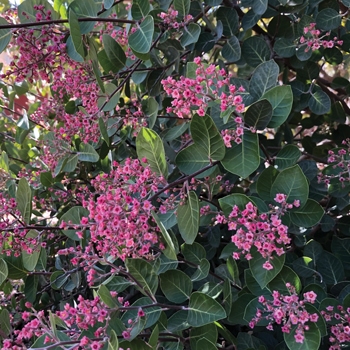
Pink-Flowering Sumac
(Rhus lentii)
This heat-tolerant plant is renowned for its incandescent pink flowers that explode in late spring and early summer. A member of the sumac family, the large shrub can grow to 8 to 15 feet tall, and is hardy to 20 to 25 degrees Fahrenheit. It is a perfect slope plant and works as a bank stabilizer. Depending on whether you hedge this plant or leave it to grow naturally, pink-flowering sumac functions conveniently as a hedge or screen plant, or as an individual specimen in a larger setting. The fluorescent pink flowers that explode in the warmer months are followed by equally brilliant droop fruits about a centimeter in size. The fruits are attractive to birds, and the dense shrub provides the perfect shaded habitat for them.
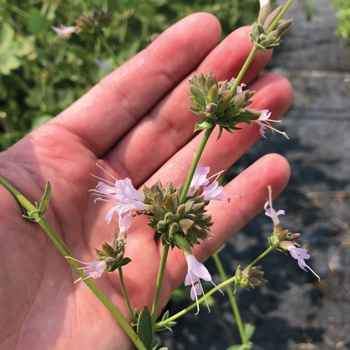
Cleveland Sage
(Salvia clevelandii ‘Japatul’)
The Theodore Payne Foundation recently acquired for sale this rare cultivar of salvia that will be available in their online store come summer. A naturally occurring hybrid of white sage and blue sage, this salvia is perfect for compact gardens and rock gardens, since it doesn’t grow as large as some other varieties of salvia, maxing out between 2 to 5 feet wide and tall. Bearing a light lavender flower that rises up in spikes above its foliage, it has purplish stems and white and green foliage. The sage is drought-tolerant and extremely sturdy, and although it prefers well-draining soil, it can survive in a fairly dry environment. Like all salvias, it will attract butterflies and hummingbirds.
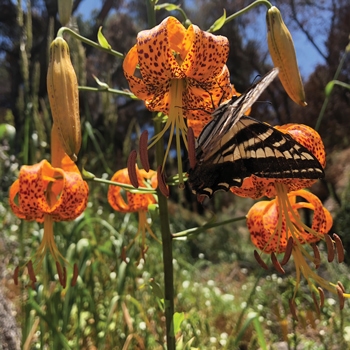
Spotted Humboldt Lily
(Lilium humboldtii, subspecies ocellatum)
Currently available in the Theodore Payne online store, this spotted flower resembles an ocelot’s coat and is sold in dry bulbs and potted plants. With baseball-size flowers, this lily is often found at the base of canyons, adjacent to but not inside streams. With a beautiful fleshy bulb that emerges in late spring, it grows from 8 to 10 feet tall, with mature plants able to boast 30 to 40 blooms on a single plant. The Humboldt lily brings butterflies, including swallowtails, and blooms in the late season, from June into July. Plant this beauty among wild roses and other lower plants that will anchor it and surround the 6- to 8- foot stalks. Like wild (not regular) roses, it prefers shadier conditions, like the north side of your house. Ensure regular watering until it’s finished flowering, when you can let it dry out a bit; overwatering in late summer can cause rot. When the plant has browned, cut it completely to the ground.
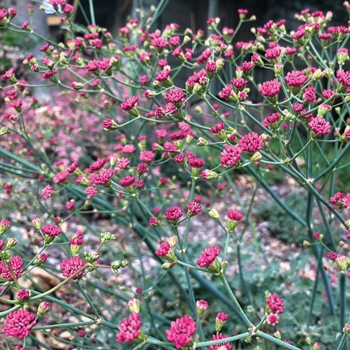
San Miguel Island Buckwheat, or Red Buckwheat
(Eriogonum grande var. rubescens)
San Miguel Island Buckwheat, endemic to one of the Channel Islands, is known for turning hillsides red. That’s in contrast to California buckwheat, which turns hillsides white in summer, earning it the nickname “SoCal snow.” Measuring about 2 feet by 2 feet, this easy-care, compact plant bears dark red flowers that bloom prolifically in spring and summer. The foliage is a verdant green with an oblong shape, and crinkly in texture. Excellent for borders and as edging plants, they sit well in awkward, hard-to-fill spots in a garden. Sow in fall or winter. Being island plants, they require a little extra moisture, but not more than one extra watering per week. The flowers vary in color but include shades like red, maroon, burgundy, pink, magenta and rose. These lovely blooms stay around from April to September, attracting a variety of pollinators.

Palmer’s Indian Mallow
(Abutilon palmeri)
This gorgeous flowering mounding bush is perfect for landscaping and can survive transplanting. Extremely drought-tolerant, it grows naturally in the desert. Growing 3 to 4 feet wide and tall, this mallow blooms creamsicle orange flowers nine to 10 months out of the year. Part of the Malvacae family, its bloom attracts a wide variety of pollinators to access the nectar, including bees, butterflies and hummingbirds. The stems’ green hairs soften its look, and given proper care, it can grow to its full size. Indian mallow can be transplanted and survive, but should not be planted in colder, higher elevations as it can be burned by frost. Plant in partial shade, where it can receive an afternoon blast of full sun. Though it prefers well-drained soil, it can also tolerate clay. Use organic or gravel mulch, and to avoid crown rot, don’t overwater. Prune every couple of years to maintain its appearance.
A New Ultra-Luxe Coffee Table Book Explores the Science of Growing Cannabis
Writing the book on cultivation.
Meet the Woodworkers of San Francisco
These urban carpenters and designers and their wares are in demand.


















